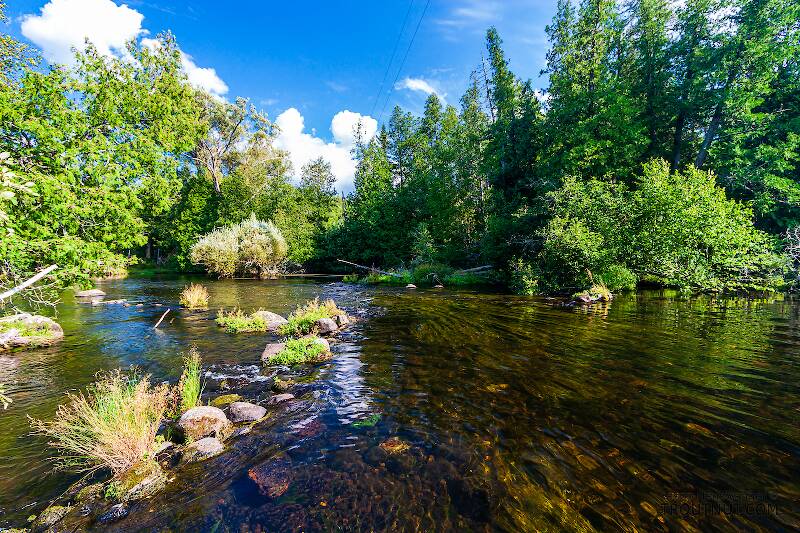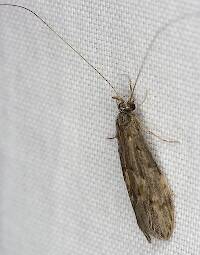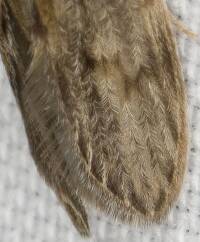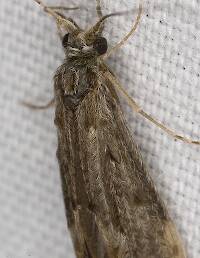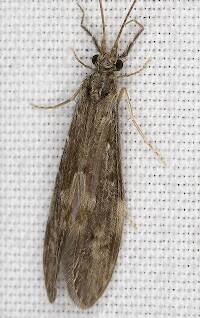
Blue-winged Olives
Baetis
Tiny Baetis mayflies are perhaps the most commonly encountered and imitated by anglers on all American trout streams due to their great abundance, widespread distribution, and trout-friendly emergence habits.
Featured on the forum

This is the first of it's family I've seen, collected from a tiny, fishless stream in the Cascades. The three species of this genus all live in the Northwest and are predators that primarily eat stonefly nymphs Merritt R.W., Cummins, K.W., and Berg, M.B. (2019).

Troutnut is a project started in 2003 by salmonid ecologist Jason "Troutnut" Neuswanger to help anglers and
fly tyers unabashedly embrace the entomological side of the sport. Learn more about Troutnut or
support the project for an enhanced experience here.
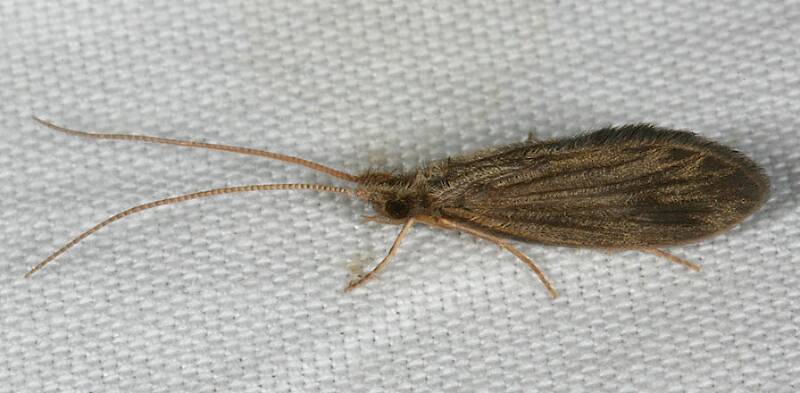
Nanz on Jun 6, 2007June 6th, 2007, 10:43 pm EDT
This caddisfly(?) came to UV light at night in Brooklyn, NY. It's about 8 mm long not including the antennae.
Steve
Taxon on Jun 7, 2007June 7th, 2007, 4:05 am EDT
Hi Steve-
Hope you have better luck here than you did on BugGuide ID Request. Sorry I can't identify it, but am a bit curious why its length would have shrunk 11% in the last week.
Hope you have better luck here than you did on BugGuide ID Request. Sorry I can't identify it, but am a bit curious why its length would have shrunk 11% in the last week.
Nanz on Jun 7, 2007June 7th, 2007, 9:26 pm EDT
Roger - Thank you for pointing out my mistake. I am basing the size on the thread count of the sheet on which the insect is resting. It's about 28 threads per cm. The critter looks to me to be about 25 threads which puts it at 8.99 mm. When I posted on Troutnut, I probably divided by 3 instead of 2.8 which would put it at 8.33 mm.
Steve
Taxon on Jun 8, 2007June 8th, 2007, 5:31 am EDT
Steve-
I have contacted Dr. John Morse of Clemson University concerning the identity of your caddisfly, and will post his response once I receive it.
I have contacted Dr. John Morse of Clemson University concerning the identity of your caddisfly, and will post his response once I receive it.
Taxon on Jun 11, 2007June 11th, 2007, 8:06 am EDT
Steve-
Received the following response from Dr. Morse this morning:
You have (at least) the (11) following Lepidostoma species in New York:
L. americanum
L. bryanti
L. costale
L. frosti
L. griseum
L. lydia
L. pictile
L. sackeni
L. sommermanae
L. togatum
L. vernale
Of those, L. costale, L. griseum and L. togatum can likely be eliminated because they are said to be late-summer emergers. L. bryanti is said to emerge in June, and L. vernale in April and May. However, I am unable to find emergence dates for the remainder.
Received the following response from Dr. Morse this morning:
Dear Roger,
This looks like a species of Lepidostoma (Lepidostomatidae).
John Morse
jmorse@clemson.edu
You have (at least) the (11) following Lepidostoma species in New York:
L. americanum
L. bryanti
L. costale
L. frosti
L. griseum
L. lydia
L. pictile
L. sackeni
L. sommermanae
L. togatum
L. vernale
Of those, L. costale, L. griseum and L. togatum can likely be eliminated because they are said to be late-summer emergers. L. bryanti is said to emerge in June, and L. vernale in April and May. However, I am unable to find emergence dates for the remainder.
Litobrancha on Jun 12, 2007June 12th, 2007, 7:39 am EDT
when in doubt ask morse is always a good strategy.
just wanted to say that i have collected lepidostoma togatum in april around Fort Payne AL and Chattanooga TN and L. griseum in june on the blue ridge parkway in VA.
you could narrow the field down a bit if you look at the end of the insect, on the dorsal side. one group of lepidostoma has very hairy round paired warts, the others do not. while you're at it, take a picture of his naughty bits!
just wanted to say that i have collected lepidostoma togatum in april around Fort Payne AL and Chattanooga TN and L. griseum in june on the blue ridge parkway in VA.
you could narrow the field down a bit if you look at the end of the insect, on the dorsal side. one group of lepidostoma has very hairy round paired warts, the others do not. while you're at it, take a picture of his naughty bits!
GONZO on Jun 12, 2007June 12th, 2007, 7:56 am EDT
The Brooklyn location triggered a vague recollection about the Long Island streams, and I found this interesting mention in LaFontaine's Caddisflies:
"L. vernalis [sp?] has produced fine fly-fishing opportunities for me on many streams, but the most memorable action has been on the beautiful spring creeks of Long Island, especially the Nissequogue and Carmans."
"L. vernalis [sp?] has produced fine fly-fishing opportunities for me on many streams, but the most memorable action has been on the beautiful spring creeks of Long Island, especially the Nissequogue and Carmans."
Litobrancha on Jun 12, 2007June 12th, 2007, 8:47 am EDT
we have a new species of Lepidostoma that is very similar to vernale and flinti. I had never seen vernale until John Weaver sent me some specimens to compare it to. You got to love Lepidostoma... McLachlan said that this group was, in terms of secondary sexual characteristics, the 'curiosity shop of trichoptera'!
Quick Reply
Related Discussions
Topic
Replies
Last Reply
12
Jun 13, 2007
by Litobrancha
by Litobrancha
1
Sep 12, 2007
by MAL1924
by MAL1924
0
Dec 24, 2006
by MartyS
by MartyS

